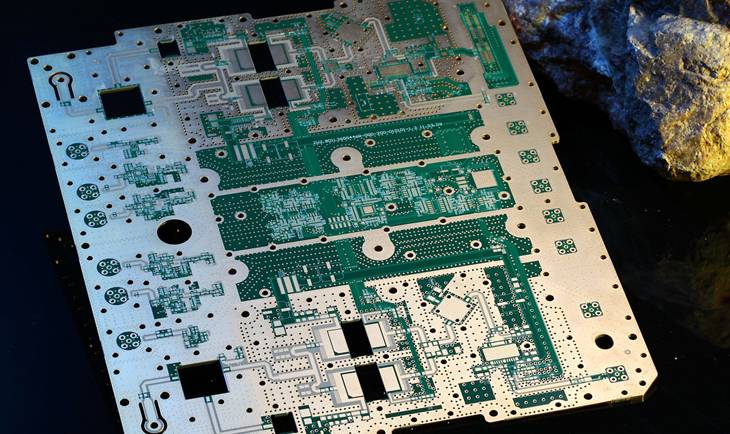With the development of high-frequency electronic equipment, especially in wireless networks. Satellite communications are developing rapidly, and information products are developing at high speeds and high frequencies. Therefore, the development of new products always requires the use of high-frequency substrates. Satellite systems, mobile phone receiving base stations, etc. it must use high frequency PCB.

The features of high frequency PCB as following:
1. DK should be small and stable enough, usually the smaller the better, high DK may lead to signal transmission delay.
2. DF should be small, which mainly affect quality of signal transmission, the smaller DF could make smaller signal wastage accordingly.
3. The thermal expansivity should be the same with copper foil as much as possible, because the difference will lead to copper foil separated in the changes of cold and heat.
4. Water absorptivity must be low, high water absorptivity will affect DK and DF when in the wet environment.
5. Heat resisting property, chemistry resisting, impact endurance, peel off resisting must be good.
Generally speaking, high frequency can be defined as frequency above 1GHz. Currently, polyfluortetraethylene(PTFE) material is widely used in high frequency PCB manufacturing, it’s also called Teflon, which frequency is normally above 5GHz. In addition, FR4 or PPO substrate can be used to the product frequency among 1GHz~10GHz. These three high frequency substrate have below differences:
With regard to laminate cost of FR4, PPO and Teflon, FR4 is the cheapest one, while Teflon is the most expensive one. In terms of DK, DF, water absorption and frequency feature, Teflon is the best. When product application require frequency above 10GHz, only can we choose Teflon PCB substrate to manufacture. Obviously, the performance of Teflon is far better than other substrate, However, Teflon substrate has the disadvantage of high cost and large heat resisting property. In order to improve PTFE stiffness and heat resisting property function, a large number of SiO2 or fiber glass as the filling material. On the other hand, due to molecule inertia of PTFE material, which it is not easy to combine with copper foil, thus, it needs to do special surface treatment on the combination side. With regard to combination surface treatment, normally use chemical etching on PTFE surface or plasma etching to plus surface roughness or add one adhesive film between PTFE and copper foil, but these may have influence on dielectric performance.
FanyPCB has many cases of high frequency PCB production orders. The raw materials of high frequency boards include Rogers, Taconic, Arlon, etc. If you have demand for high frequency board layout design and high frequency board prototyping & production, please contact us pcb@fany-eda.com.
Company News

